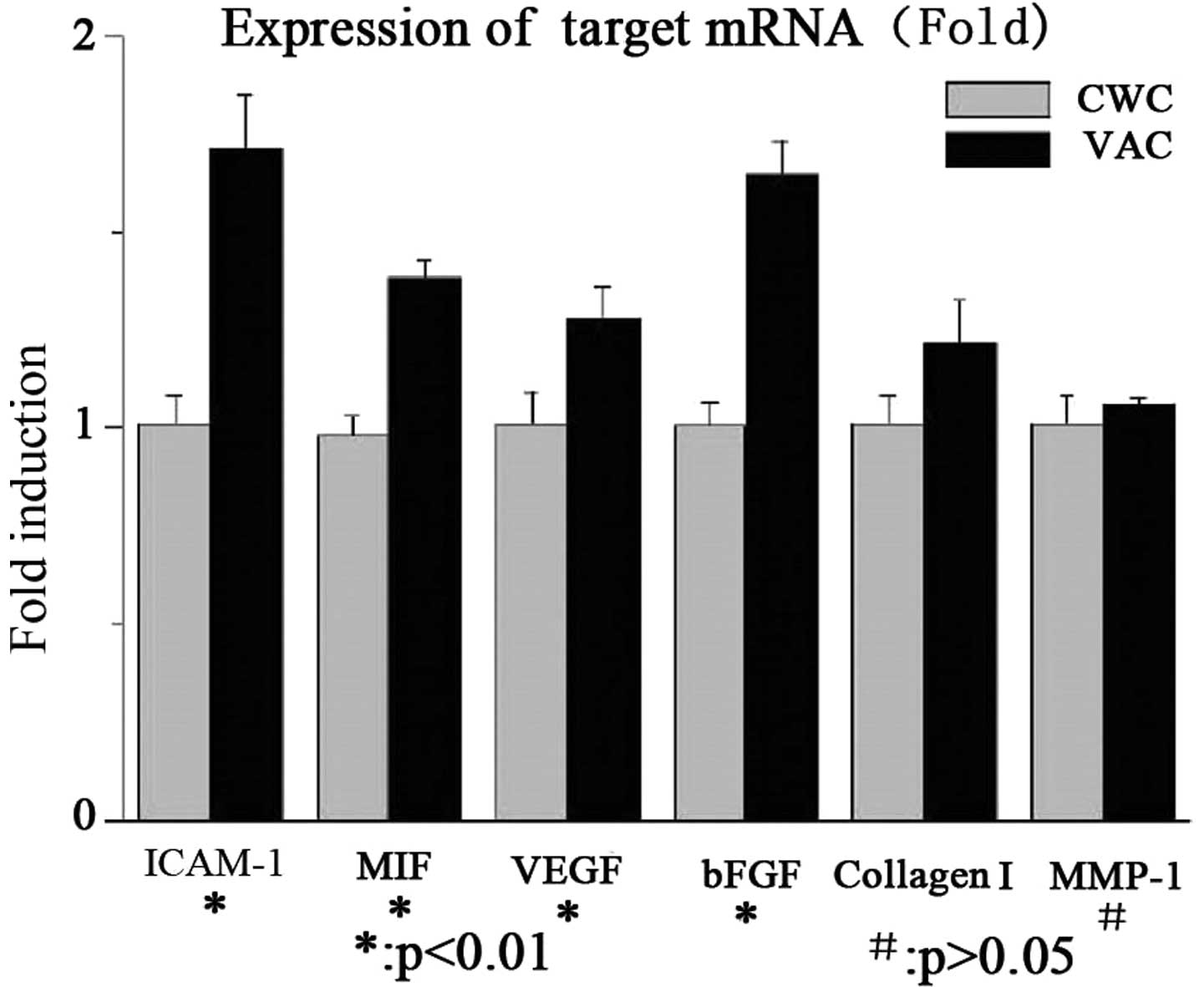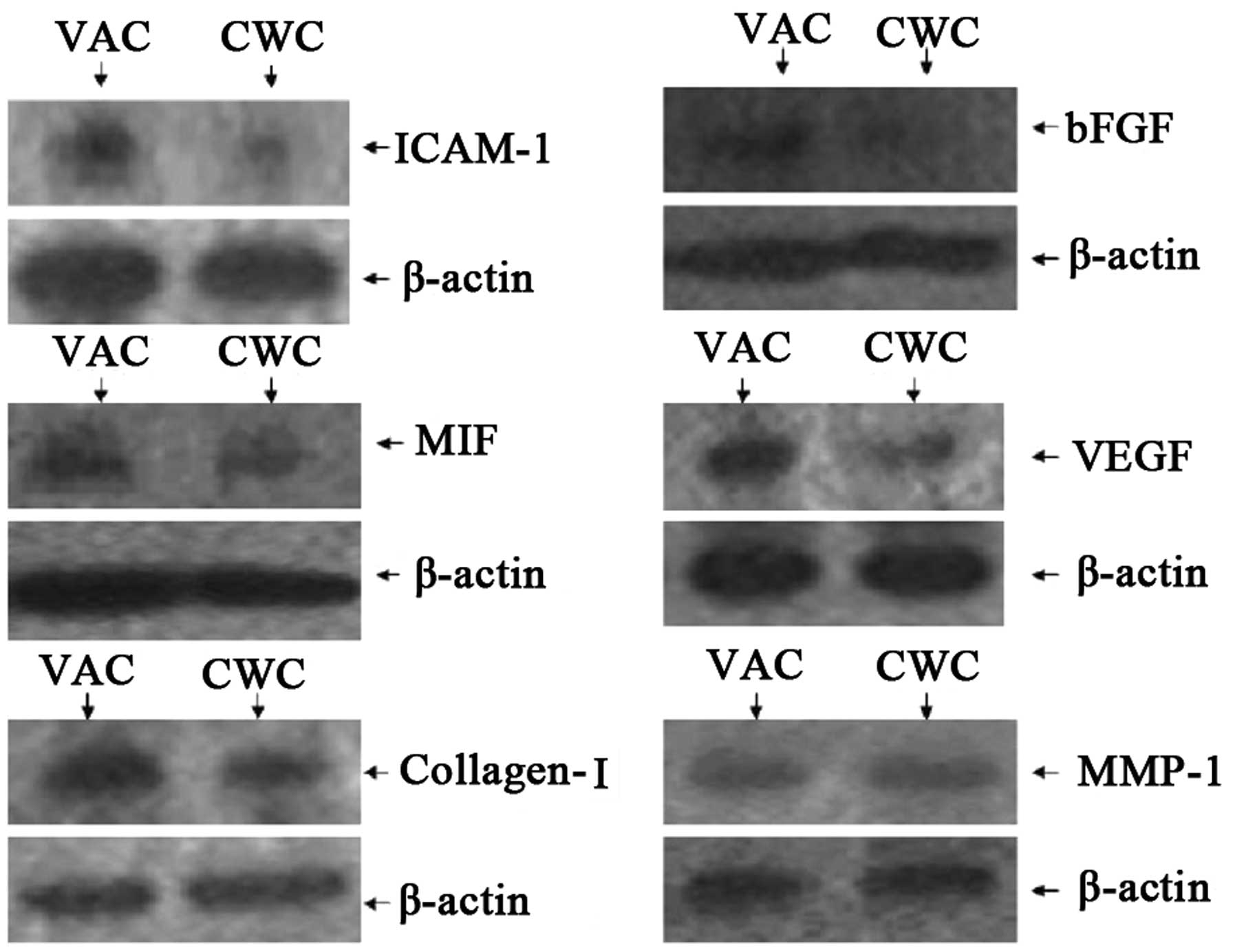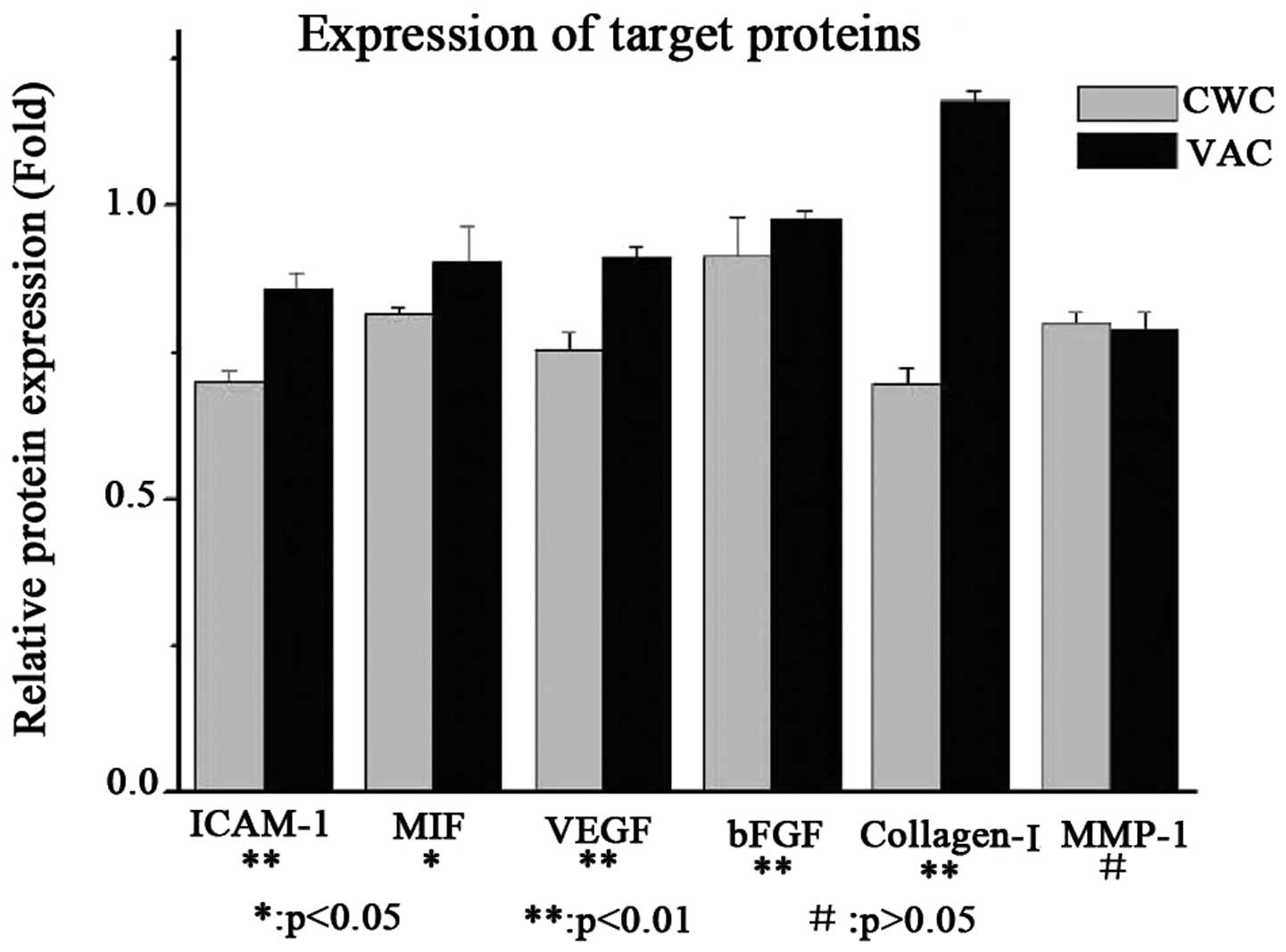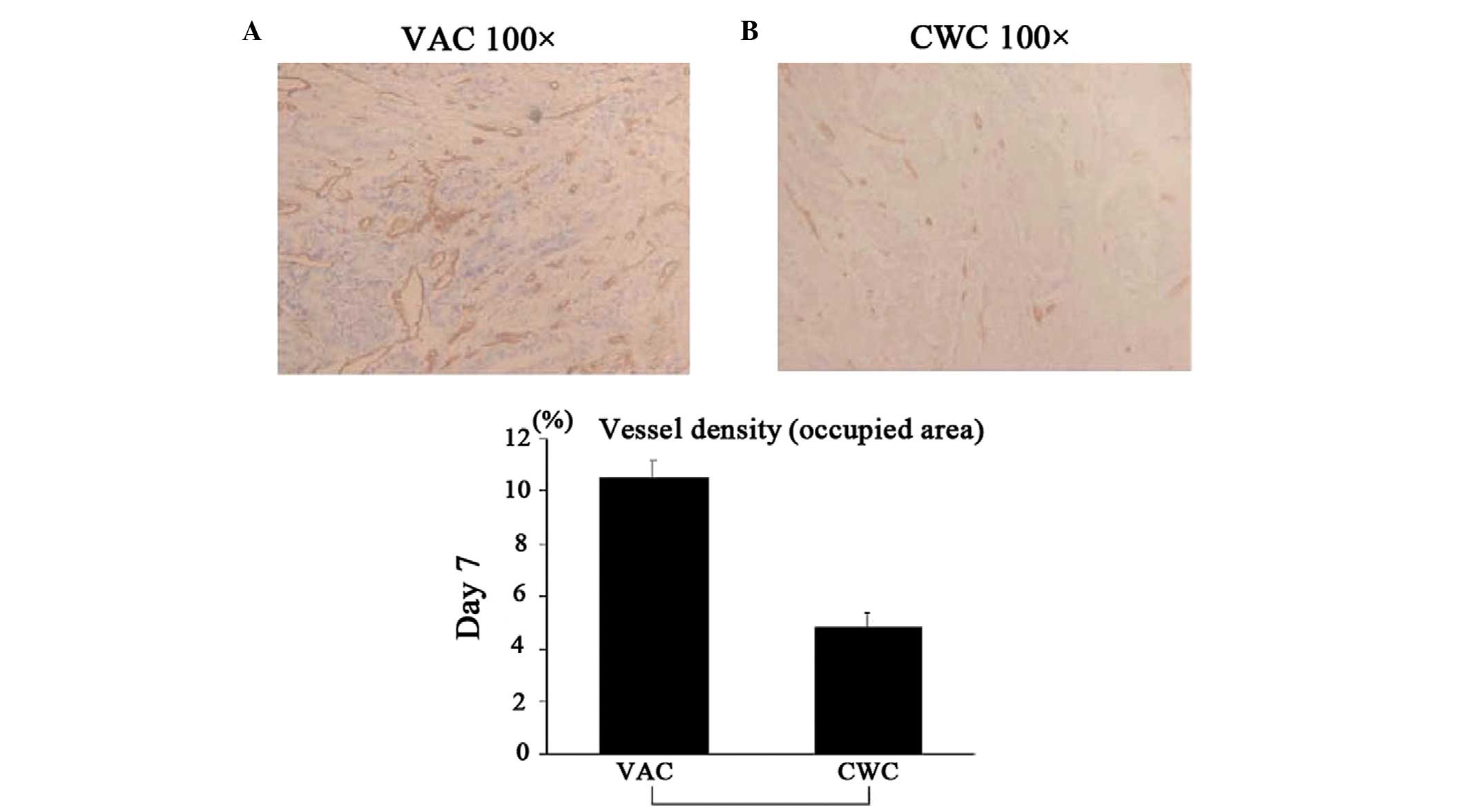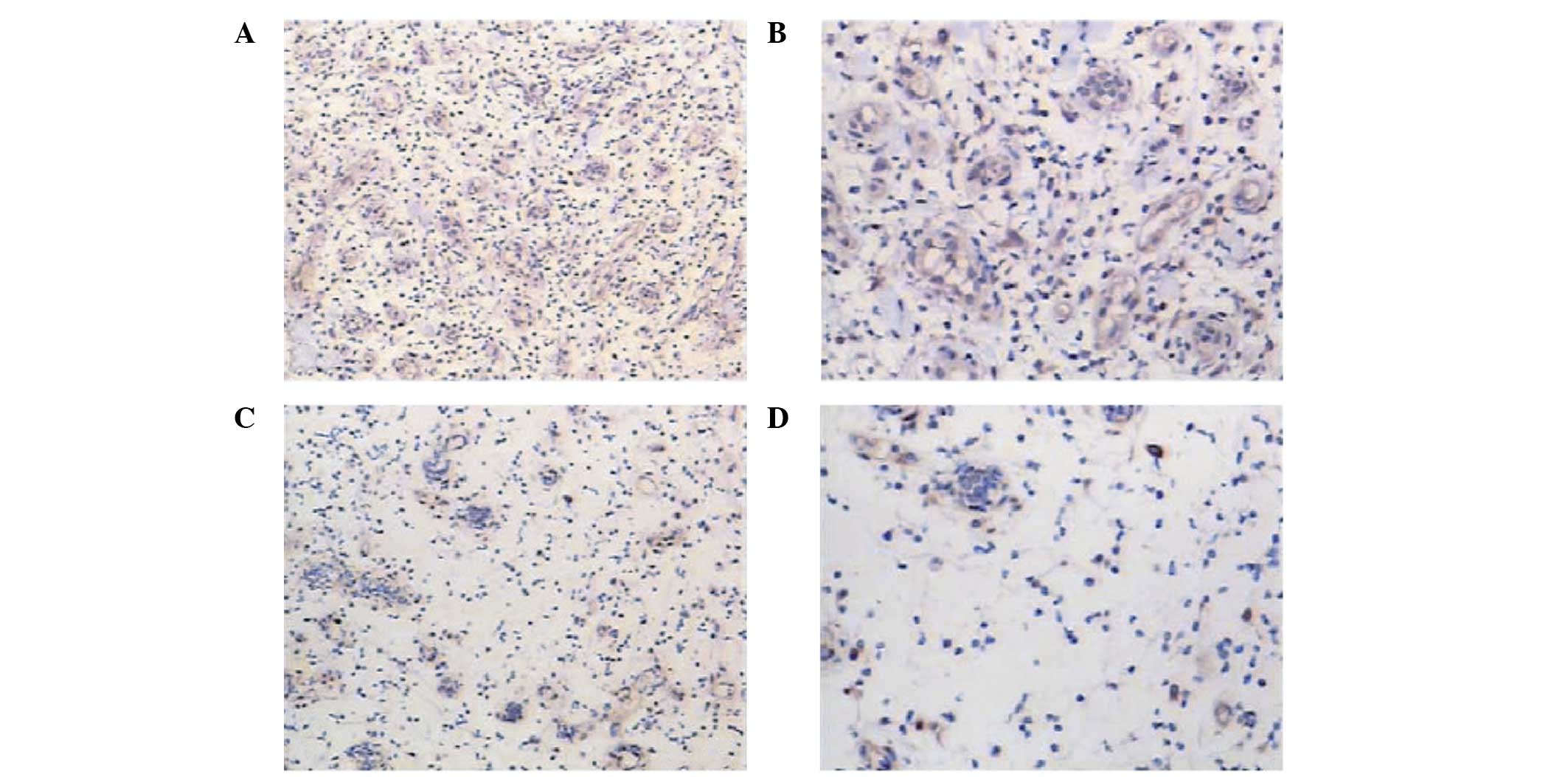|
1
|
Morykwas MJ, Simpson J, Punger K, et al:
Vacuum-assisted closure: state of basic research and physiologic
foundation. Plast Reconstr Surg. 117(7 Suppl): 121S–126S. 2006.
View Article : Google Scholar : PubMed/NCBI
|
|
2
|
Venturi ML, Attinger CE, Mesbahi AN, et
al: Mechanisms and clinical applications of the vacuum-assisted
closure (VAC) device: a review. Am J Clin Dermatol. 6:185–194.
2005. View Article : Google Scholar : PubMed/NCBI
|
|
3
|
Labler L, Rancan M, Mica L, et al:
Vacuum-assisted closure therapy increases local interleukin-8 and
vascular endothelial growth factor levels in traumatic wounds. J
Trauma. 66:749–757. 2009. View Article : Google Scholar : PubMed/NCBI
|
|
4
|
Whelan C, Stewart J and Schwartz BF:
Mechanics of wound healing and importance of vacuum assisted
closure in urology. J Urol. 173:1463–1470. 2005. View Article : Google Scholar : PubMed/NCBI
|
|
5
|
Zannis J, Angobaldo J, Marks M, DeFranzo
A, David L, Molnar J and Argenta L: Comparison of fasciotomy wound
closures using traditional dressing changes and the vacuum-assisted
closure device. Ann Plast Surg. 62:407–409. 2009. View Article : Google Scholar : PubMed/NCBI
|
|
6
|
Labler L, Keel M, Trentz O and Heinzelmann
M: Wound conditioning by vacuum assisted closure (V.A.C.) in
postoperative infections after dorsal spine surgery. Eur Spine J.
15:1388–1396. 2006. View Article : Google Scholar : PubMed/NCBI
|
|
7
|
Grose R and Werner S: Wound-healing
studies in transgenic and knockout mice. Mol Biotechnol.
28:147–166. 2004. View Article : Google Scholar : PubMed/NCBI
|
|
8
|
Dustin ML, Rothlein R, Bhan AK, et al:
Induction by IL 1 and interferon-gamma: tissue distribution,
biochemistry, and function of a natural adherence molecule
(ICAM-1). J Immunol. 137:245–254. 1986.
|
|
9
|
Buntrock P, Jentzsch KD and Heder G:
Stimulation of wound healing, using brain extract with fibroblast
growth factor (FGF) activity. I Quantitative and biochemical
studies into formation of granulation tissue. Exp Pathol. 21:46–53.
1982. View Article : Google Scholar : PubMed/NCBI
|
|
10
|
McGee GS, Davidson JM, Buckley A, et al:
Recombinant basic fibroblast growth factor accelerates wound
healing. J Surg Res. 45:145–153. 1988. View Article : Google Scholar : PubMed/NCBI
|
|
11
|
Calandra T and Roger T: Macrophage
migration inhibitory factor: a regulator of innate immunity. Nat
Rev Immunol. 3:791–800. 2003. View
Article : Google Scholar : PubMed/NCBI
|
|
12
|
Leng L and Bucala R: Macrophage migration
inhibitory factor. Crit Care Med. 33(12 Suppl): S475–S477. 2005.
View Article : Google Scholar : PubMed/NCBI
|
|
13
|
Wiegand C, Schönfelder U, Abel M, et al:
Protease and pro-inflammatory cytokine concentrations are elevated
in chronic compared to acute wounds and can be modulated by
collagen type I in vitro. Arch Dermatol Res. 302:419–428. 2010.
View Article : Google Scholar : PubMed/NCBI
|
|
14
|
Stechmiller J, Cowan L and Schultz G: The
role of doxycycline as a matrix metalloproteinase inhibitor for the
treatment of chronic wounds. Biol Res Nurs. 11:336–344. 2010.
View Article : Google Scholar : PubMed/NCBI
|
|
15
|
Kramer MF and Coen DM: Enzymatic
amplification of DNA by PCR: standard procedures and optimization.
Curr Protoc Mol Biol. Chapter 15(Unit 15)2001.
|
|
16
|
Saiki RK, Gelfand DH, Stoffel S, et al:
Primer-directed enzymatic amplification of DNA with a thermostable
DNA polymerase. Science. 239:487–491. 1988. View Article : Google Scholar : PubMed/NCBI
|
|
17
|
Morykwas MJ, Argenta LC, Shelton-Brown EI
and McGuirt W: Vacuum-assisted closure: a new method for wound
control and treatment: animal studies and basic foundation. Ann
Plast Surg. 38:553–562. 1997. View Article : Google Scholar : PubMed/NCBI
|
|
18
|
Webb LX: New techniques in wound
management: vacuum-assisted wound closure. J Am Acad Orthop Surg.
10:303–311. 2002.PubMed/NCBI
|
|
19
|
Salazard B, Niddam J, Ghez O, et al:
Vacuum-assisted closure in the treatment of poststernotomy
mediastinitis in the paediatric patient. J Plast Reconstr Aesthet
Surg. 61:302–305. 2008. View Article : Google Scholar : PubMed/NCBI
|
|
20
|
Ferrara N, Gerber HP and LeCouter J: The
biology of VEGF and its receptors. Nat Med. 9:669–676. 2003.
View Article : Google Scholar : PubMed/NCBI
|
|
21
|
Yukami T, Hasegawa M, Matsushita Y, et al:
Endothelial selectins regulate skin wound healing in cooperation
with L-selectin and ICAM-1. J Leukoc Biol. 82:519–531. 2007.
View Article : Google Scholar : PubMed/NCBI
|
|
22
|
Nagaoka T, Kaburagi Y, Hamaguchi Y, et al:
Delayed wound healing in the absence of intercellular adhesion
molecule-1 or L-selectin expression. Am J Pathol. 157:237–247.
2000. View Article : Google Scholar : PubMed/NCBI
|
|
23
|
Tanaka E, Ase K, Okuda T, et al: Mechanism
of acceleration of wound healing by basic fibroblast growth factor
in genetically diabetic mice. Biol Pharm Bull. 19:1141–1148. 1996.
View Article : Google Scholar : PubMed/NCBI
|
|
24
|
Ozawa K, Kondo T, Hori O, et al:
Expression of the oxygen-regulated protein ORP150 accelerates wound
healing by modulating intracellular VEGF transport. J Clin Invest.
108:41–50. 2001. View Article : Google Scholar : PubMed/NCBI
|
|
25
|
Raghow R: The role of extracellular matrix
in postinflammatory wound healing and fibrosis. FASEB J. 8:823–831.
1994.PubMed/NCBI
|
|
26
|
Zhou M, Yu A, Wu G, et al: Role of
different negative pressure values in the process of infected
wounds healing treated by vacuum-assisted closure: an experimental
study. Int Wound J. 10:508–515. 2013. View Article : Google Scholar : PubMed/NCBI
|
|
27
|
Gomez DE, Alonso DF, Yoshiji H and
Thorgeirsson UP: Tissue inhibitors of metalloproteinases:
structure, regulation and biological functions. Eur J Cell Biol.
74:111–122. 1997.PubMed/NCBI
|
|
28
|
Reynolds JJ: Collagenases and tissue
inhibitors of metalloproteinase: a functional balance in tissue
degradation. Oral Dis. 2:70–76. 1996. View Article : Google Scholar : PubMed/NCBI
|
|
29
|
Spyrou GE and Naylor IL: The effect of
basic fibroblast growth factor on scarring. Br J Plast Surg.
55:275–282. 2002. View Article : Google Scholar : PubMed/NCBI
|
|
30
|
Birkedal-Hansen H, Moore WG, Bodden MK, et
al: Matrix metalloproteinases: a review. Crit Rev Oral Biol Med.
4:197–250. 1993.PubMed/NCBI
|
|
31
|
Schneider AM, Morykwas MJ and Argenta LC:
A new and reliable method of securing skin grafts to the difficult
recipient bed. Plast Reconstr Surg. 102:1195–1198. 1998. View Article : Google Scholar : PubMed/NCBI
|



